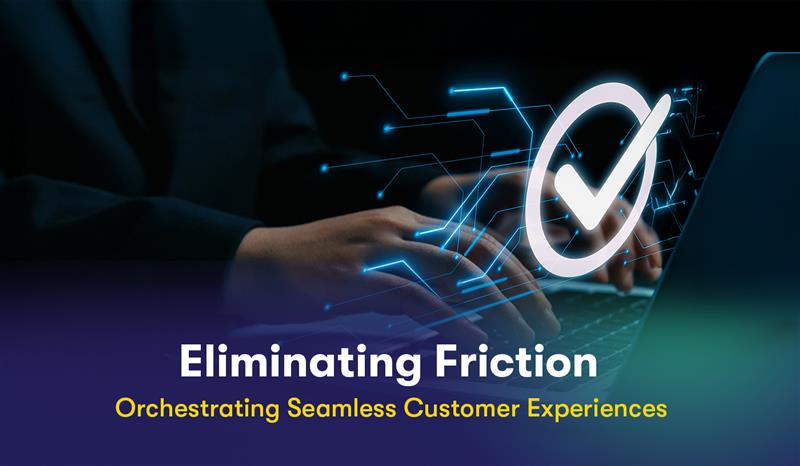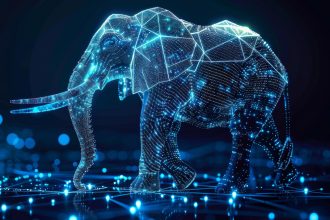Your Customer Doesn’t See Channels. They See Friction.
Introduction: Why Channel Thinking is Obsolete
Today’s customers toggle between touchpoints with zero distinction. Browsing a product in-store, researching it later online, chatting with support on WhatsApp, and completing the purchase in an app — this is a single experience in their mind. But for most brands, it’s a fractured journey. The disconnect? Friction — not due to effort, but because of contextless orchestration.
Customers don’t think in channels. They think in outcomes.
And yet, most customer experience (CX) systems still operate like it’s 2015.
The Real Problem: A Siloed MarTech Mindset
As highlighted in the ET CX Roundtable 2024, 64% of Indian CXOs admit their current tech stack can’t deliver truly Phygital experiences. The friction isn’t a user interface issue. It’s systemic — rooted in:
- Channel-first logic: CX tools treat each touchpoint as isolated, leading to disconnected moments.
- Delayed campaign cycles: Time-sensitive intent signals are wasted.
- Rigid architectures: Offline actions rarely inform digital responses, and vice versa.
Imagine walking into a store, trying a product, only to be retargeted with ads for it days later — even after you’ve purchased it. That’s not poor personalization; that’s a broken system.
Enter the Phygital Nervous System
To close this gap, leading brands are transitioning to a Phygital approach — one that sees CX not as campaigns, but as connected cognitive reactions across ecosystems. This shift is driven by:
1. Digital Engineering Backbone
Composable systems that enable real-time signal flow between POS, apps, CRM, loyalty programs, and web platforms.
Think: Unified identity graphs + plug-and-play APIs = No context lost between touchpoints.
2. Agentic AI Layer
Forget rigid workflows. Agentic AI observes micro-signals (e.g., store footfall + app abandonment), interprets intent, and reacts — instantly.
Every trigger is hyper-contextual, personal, and precise.
3. Behavioral Design Principles
Orchestration is built on psychology:
- Timing Bias: Trigger actions at peak attention.
- Anchoring: Frame value for better conversions.
- Cognitive Ease: Minimize decision fatigue.
This creates systems that feel human — not robotic.
From Friction to Flow: What Real Impact Looks Like
Case 1: Healthcare CX
A hospital unified offline OPD visits with digital follow-ups. Agentic AI auto-triggered contextual reminders.
- Re-bookings rose by 31%
- Drop-offs reduced by 45%
- Feedback scores doubled in 60 days
Case 2: D2C Retail
By syncing in-store behavior with digital journeys, a fashion brand:
- Boosted cross-channel conversions by 37%
- Saw 21% higher revenue per visitor
- Doubled abandonment recapture
Strategy Shift: From Automation to Awareness
Brands that win in 2025 won’t be the most automated. They’ll be the most adaptive.
Speed isn’t an edge anymore — it’s the entry fee. Context is the new currency.
The Next-Gen AI-Driven CX Platform doesn’t just automate. It orchestrates, predicts, and humanizes brand interactions — across every touchpoint, in real time.
Conclusion: Engineer Transitions, Not Just Touchpoints
Your customer doesn’t care if they’re online, offline, or somewhere in-between. They care if the brand remembers, understands, and responds like a human.
That’s why it’s time to stop optimizing CX in fragments — and start re-architecting it as a reflex system.
Not more tools. Smarter orchestration.
Sources
1. McKinsey & Company, 2024 – 76% of consumers expect consistency across channels
2. Salesforce State of Connected Customer Report, 2023 – Only 25% of brands meet omnichannel consistency expectations
3. ET CX Roundtable, 2024 – 64% of Indian CXOs say their tech stack lacks Phygital readiness
4. Bain x Google India Study, 2024 – Indian customers use 4.7 channels before conversion
5. Case Insights – Derived from proprietary use cases mentioned in “Phygital CX: Bridging Physical and Digital Touchpoints” strategy deck
6. Search Volume Trends – Keyword benchmarks from June 2025 dataset (e.g., “customer experience journey mapping,” “ai in customer experience,” “personalization in CX”)



